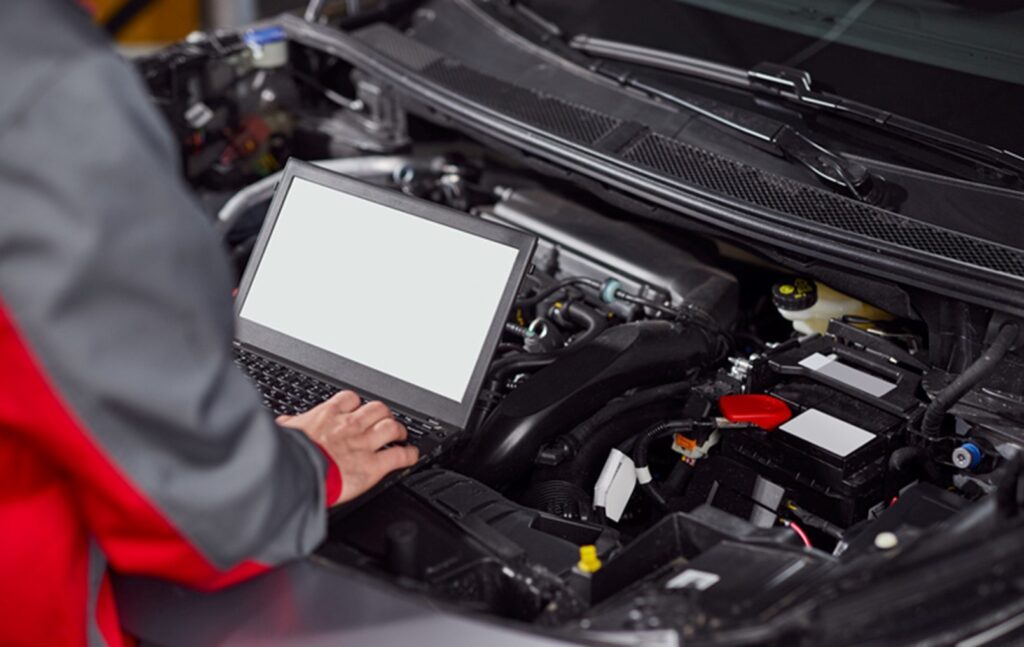As the global push for environmental sustainability accelerates, the automotive industry is rapidly transitioning towards zero-emission vehicles (ZEVs). In recent years, sales of electric vehicles (EVs) have surged, with projections indicating that by 2030, EVs could account for as much as 30% of the total market share. Hybrid vehicles, although a transitionary stage in ICE to EV migration, are also quite popular these days.
This shift is not just a trend but a critical move to reduce greenhouse gas emissions. This especially holds true as transportation accounts for a significant portion of global emissions.
Talking about emissions, On-board diagnostics (OBD) has long been the de-facto protocol for recording and retrieving emissions related vehicle data. However, as automobiles evolve into EVs and Hybrid vehicles, the way we look at emissions data needs a reboot.
And that’s where new-age protocols such as OBDonUDS and ZEVonUDS (Zero Emission Vehicle on Universal Diagnostic Services- SAE J1979-3), take center stage.
Exploring the Need for ZEVonUDS (SAEJ1979-3) Protocol in Modern day Automotive Ecosystem
The traditional On-Board Diagnostics (OBD) systems were primarily developed for vehicles powered by internal combustion engines. These systems focus on monitoring components that could affect a vehicle’s emission outputs, such as the exhaust and fuel systems.
However, as the industry evolves with the increase of electric and hybrid vehicles, these traditional systems fall short in addressing the diagnostic requirements unique to electric drivetrains and battery systems.
ZEVonUDS was developed to fill this gap. It extends the existing frameworks of OBD to include electric propulsion systems, ensuring that diagnostics can also cover electric motors, battery packs, and other specific components critical to the operation of ZEVs.
This adaptation is essential not only for maintenance and troubleshooting but also for complying with emerging regulatory standards focusing on vehicle emissions and energy efficiency.

Here are the key areas of difference:
- Electric Propulsion Systems: Unlike vehicles with internal combustion engines that rely on gasoline or diesel, ZEVs use electric motors powered by batteries or fuel cells.
This fundamental difference in propulsion technology requires specific diagnostic protocols to monitor and manage electric powertrain components effectively, including battery management systems, electric motors, inverters, and onboard charging systems.
Such systems are not present in ICE vehicles and hence, new diagnostics services are needed to monitor these parameters.
- Battery Management System: The health and efficiency of battery packs are crucial for the operation of EVs. Diagnostics needs to assess various parameters such as state of charge (SOC), state of health (SOH), cell voltage levels, temperature profiles, and charging cycles.
Monitoring these parameters helps in predicting battery lifespan, performance under different environmental conditions, and potential failure modes. A dedicated protocol like ZEVonUDS is equipped with
- Regenerative Braking Systems: ZEVs often feature regenerative braking, which converts some of the vehicle’s kinetic energy back into electrical energy to recharge the battery.
This system adds complexity to vehicle diagnostics as it involves the interaction between mechanical braking components and the electrical system.
- Thermal Management Systems: Effective thermal management is vital for maintaining battery and electronic component efficiency and longevity. Diagnostic systems for ZEVs must monitor and regulate the temperature of critical components, ensuring they operate within safe thermal thresholds.
- Software and Firmware Over-the-Air (OTA) Updates: ZEVs frequently receive software updates that can alter vehicle functions and performance characteristics. Diagnostic protocols must be capable of verifying the successful implementation of these updates, diagnosing issues arising from them, and ensuring compatibility with vehicle hardware.
- Emission Standards Compliance: For PHEVs, which combine electric propulsion with a combustion engine, diagnostics must also ensure compliance with emission standards. This involves monitoring exhaust systems and emission control systems, which are not present in fully electric vehicles but crucial for hybrids.
Strategy and People Behind ZEVonUDS Protocol (SAE J1979-3)
- The planning and execution of ZEVonUDS were driven by the Society of Automotive Engineers (SAE International) and aligned with the broader regulatory changes spearheaded by entities like the California Air Resources Board (CARB).
- The standard was specifically designed to address the new challenges presented by the diagnostic needs of zero-emission technologies. Notably, ZEVonUDS includes protocols for reading out crucial data such as the Battery State-of-Health, which is vital for assessing the residual value and functionality of EV batteries.
- The development of ZEVonUDS was part of a strategic move to extend the existing On-Board Diagnostics (OBD) standards to encompass the diagnostic requirements of electric and hybrid vehicles.
- This extension was necessary not only to ensure regulatory compliance with emission standards but also to enhance the maintenance capabilities of these vehicles, which are critical to their operation and longevity.
- ZEVonUDS became a subset of the UDS-based diagnostics introduced under SAE J1979-2 (OBDonUDS), focusing specifically on zero-emission vehicles. This standard was integrated into the regulatory framework to ensure that starting from a specific model year, all new ZEVs and PHEVs would support these diagnostic protocols, thereby standardizing the approach to handling diagnostics across this new vehicle category.
Why is UDS Protocol the Right Fit for ZEV diagnostics?
Unified Diagnostics Services (UDS) is true to its name. It has a unification of all diagnostic services that are required for modern vehicles including ZEVs. These services enable detailed interactions with the vehicle’s ECUs for tasks such as reading and clearing diagnostic trouble codes, accessing real-time data, performing routine or reconfiguration services, and more.
UDS is also highly flexible and scalable- allowing manufacturers to implement the protocol across different models and types of vehicles, including hybrids and fully electric vehicles.
For ZEVs, this means that UDS can be adapted to support both existing technologies and future advancements in vehicle technology without the need for significant changes to the diagnostic protocol itself.

UDS works over CAN (Controller Area Network) and DoIP (Diagnostic communication over Internet Protocol) networks. DoIP, in particular, is beneficial for ZEVs as it supports high-speed data transmission over Ethernet, facilitating faster diagnostics and firmware updates.
This is especially important for electric vehicles where software plays a crucial role in the performance and efficiency of the vehicle.
UDS Services Utilized by ZEVonUDS (SAE J1979-3)
The ZEVonUDS (SAE J1979-3) protocol utilizes a variety of Universal Diagnostic Services (UDS) to address the specific needs of zero-emission vehicles (ZEVs), particularly electric vehicles (EVs) and plug-in hybrid electric vehicles (PHEVs).
Here are some of the key UDS services and their applications within the ZEVonUDS framework:
| UDS Service | Description |
| Diagnostic Session Control (ISO 14229-1) | Manages different diagnostic sessions between the diagnostic tool and the vehicle’s control units, enabling different levels of diagnostic access depending on the session type. |
| Read Data by Identifier and Read Memory by Address (ISO 14229-1) | Allows for reading specific data such as the state of health of the battery, charge levels, and other vital parameters crucial for managing electric vehicle components. |
| Write Data by Identifier and Write Memory by Address (ISO 14229-1) | Used to update or modify configuration settings within the vehicle’s control units, crucial for applying fixes or updates to vehicle software. |
| Routine Control (ISO 14229-1) | Supports the activation of specific diagnostic routines within the vehicle’s control modules, including tests for various electronic systems specific to electric propulsion, such as battery management systems and electric motor controllers. |
| Input Output Control (ISO 14229-1) | Used to control the behaviour of different systems temporarily for testing purposes, such as manually triggering regenerative braking systems or other specific electric vehicle functionalities. |
| Diagnostic Communication over Internet Protocol (DoIP) (ISO 13400-2 and ISO 13400-3) | Allows diagnostics over Ethernet connections for high-speed diagnostics and updates, providing faster data transfer rates than traditional CAN networks. |
These UDS services are integrated into the ZEVonUDS to ensure that diagnostics and maintenance of electric and hybrid vehicles are comprehensive and meet the specific needs of these advanced vehicles. The adoption of such protocols helps in enhancing the reliability, efficiency, and safety of ZEVs, catering to the unique operational profiles of electric drivetrains and their associated components.
Conclusion
By addressing the unique needs of zero-emission vehicles, this standard not only solves existing challenges but also paves the way for advancements in vehicle technology and regulatory compliance. As the industry continues to evolve, the role of standards like ZEVonUDS will become increasingly important in ensuring the efficiency, safety, and environmental friendliness of the next generation of vehicles.
The ongoing adoption of ZEVonUDS across the global automotive industry highlights its critical importance and the broader shift towards sustainable automotive technologies.




